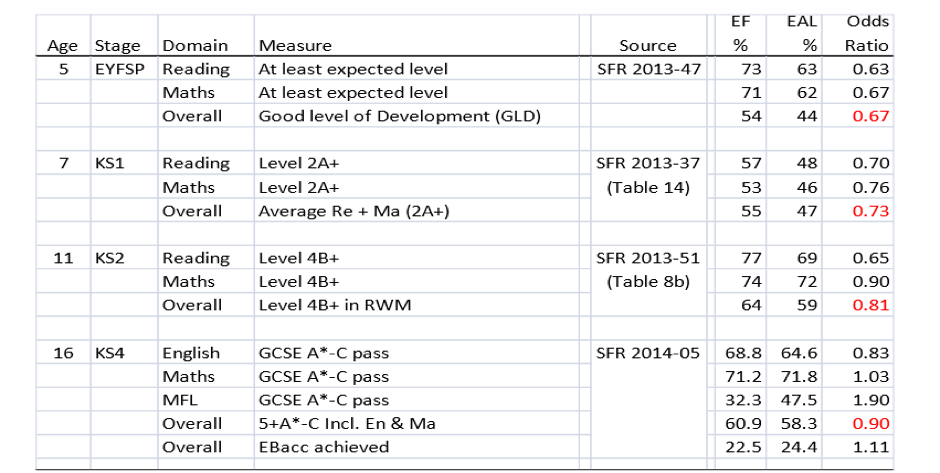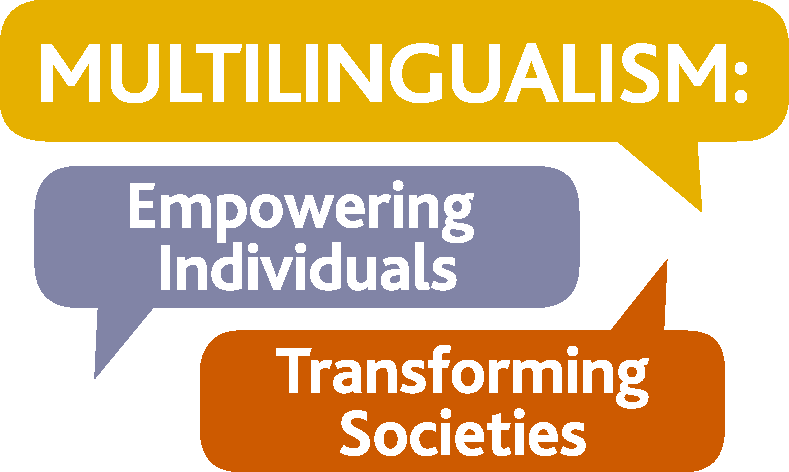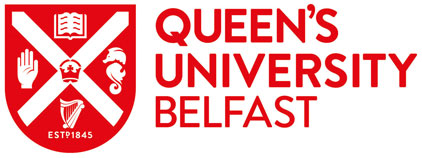Background
In recent years, bilingualism and multilingualism have become a central concern for local and government authorities in the UK as around 1,700,000 primary and secondary school pupils in England speak English as an Additional Language. The Department for Education as well as charity organizations, have declared an active interest in research and dissemination of research findings to the wider public regarding bilingual children growing up and receiving education in the UK schools. Most of the relevant research reports, advice and guidelines to practitioners and parents concern school-age children from primary through to secondary schools. There are also government initiatives or charity organizations concerned with preschool childcare and education for children for whom English is not the home language. Specifically, the Early Years Foundation Stage (EYFS) framework, effective from September 2014, defines three ‘prime’ areas as crucial for the framework’s principles: a) communication and language, b) physical development and c) personal, social and emotional development. As communication and language are the first of these prime areas in the framework, the role of multilingualism and the implementation of the framework for children with English as an additional language (EAL) is of direct relevance to the framework. EAL children are specifically mentioned in §1.7, reproduced below:
“For children whose home language is not English, providers must take reasonable steps to provide opportunities for children to develop and use their home language in play and learning, supporting their language development at home. Providers must also ensure that children have sufficient opportunities to learn and reach a good standard in English language during the EYFS: ensuring children are ready to benefit from the opportunities available to them when they begin Year 1. When assessing communication, language and literacy skills, practitioners must assess children’s skills in English. If a child does not have a strong grasp of English language, practitioners must explore the child’s skills in the home language with parents and/or carers, to establish whether there is cause for concern about language delay (emphasis mine).”
At the age of 2 assessment of the prime areas can include assessment of the home language. At 5 years, Early Learning Goals (ELGs) for communication and language including listening, attention, understanding and speaking as well as literacy, that is, reading and writing skills, are only assessed in English. While at 5 ELGs for other areas (e.g. physical development and personal, social and emotional development) can be assessed in the home language, from then on, all assessment in structured educational contexts for EAL children is based in English.
This understandable emphasis on English can lead to the gradual atrophy of the home language. My aim in this article is to show that decline in a child’s bilingual abilities has implications for the child’s cognitive and academic development. In what follows, I will acknowledge some of the organized efforts towards supporting home language skills in the UK and then outline some research findings that highlight the need for bilingual/multilingual education for children growing up with more than one language.
EAL children and their diversity
The National Association for Language Development in the Curriculum (NALDIC) is the UK subject association for EAL children. NALDIC states as its mission the promotion of effective teaching and learning of EAL and bilingual pupils in UK schools. NALDIC aims at raising sensitivity to and awareness of the fact that children with EAL may be at a disadvantage when entering the Early Years setting if they receive no support in their home language or are discouraged from using it at home. The association points out the adverse effects of limited or no use of home language on the child’s assessment at age in “Supporting children learning English as an additional language: Guidance for practitioners in the Early Years Foundation Stage” (Primary National Strategy), 2007. Note that just under 1,700,000 primary and secondary school pupils in England speak English as an Additional Language.
In a research report entitled “English as an Additional Language (EAL) and educational achievement in England: An analysis of the National Pupil Database” published by the Bell Foundation from the Department of Education at the University of Oxford, evidence is presented on school attainment at different stages of schooling and school assessment:
Table 2.7: English as Additional Language (EAL) versus English as First Language (FLE) and achievement at age 5, 7, 11 and 16: England 2013 (from Strand et al, 2015: 27).

According to this report, at the end of Reception class, i.e. at age 5, only 44% of pupils with English as an Additional Language achieve a Good Level of Development (GLD), compared to 54% of pupils recorded as children with English as a first language, with respect to the Early Learning Goals in EYFS profile assessment. Thus, perhaps not surprisingly, at the end of their first year of full-time education children from homes where exposure to English is lower achieve lower results on average. Although in later years of schooling the gap between EAL and monolingual children closes (in some cases in favour of EAL children), during most of primary and secondary schooling up to Years 10-11, EAL children on average underperform compared to those with English as a first language, but also compared to those EAL children with English as their main language. The overall conclusion then is that children who are not fully fluent in English generally performed less well than those who spoke English only, at all key stages. Several large scale studies have also revealed that lack of fluency in English was a statistically significant predictor of performance in English, Mathematics and Science. Such findings are also supported by smaller scale research studies showing that EAL children do not differ from children with English as a first (and only) language in word reading (i.e. saying written words aloud) but they do differ in oral language skills and reading comprehension.
These studies show that good command of English is necessary for academic achievement. But they may also lead to the incorrect conclusion that bilingualism impedes English fluency and, accordingly, academic achievement. It is, therefore, important to note that although research findings like these give us valuable information about the broad achievement of EAL pupils, they do not capture the considerable variation found among EAL children. Research in bilingualism has repeatedly shown that bilinguals differ from each other in a number of ways, even when they are members of the same community. Specifically, two important factors contributing to variation in skills and school performance are not captured in the research mentioned above: the time which EAL children have already spent in UK schooling at the time of assessment and differences in home language practices. Home language practices usually refer to the time the child spends daily using the minority and the majority language at home as well as to the type of activities she uses in each language, such as shared book reading and story telling usually referred to as emergent literacy skills. Whether the children also receive community language support on a regular basis in order to develop higher literacy level in the minority language is crucial information missing from government reports or research studies. Literacy and education opportunities in the home language or lack thereof can be responsible for research findings on EAL children’s performance in reading comprehension for example, one of the most important literacy outcome measures and educational predictors. Given that the outcome measures are always English-based and minority-language factors are not included, we miss important information which could account for the variation we find in school achievement in EAL children.
The diversity of bilingual children is also relevant in the context of research into complex cognitive skills which has often revealed an advantage for bilinguals when compared to monolinguals. For instance, in cognitive tasks measuring goal-oriented behaviour, the capacity to think ahead, to suppress impulses, and to temporarily hold and update information, bilingual children and older adults outperform monolingual peers. These positive advantages emerge because bilinguals need to constantly control the competition between their two languages and choose between the languages they speak. However, several studies have failed to replicate these findings, possibly due to the diversity of experience of immigration and multiculturalism. Importantly, the variability in the cognitive profiles of bilinguals can be related to the diversity in the experience that bilingual children have with the home language and the choice of language(s) in education. Indeed, recent research highlights the positive impact of bilingual education and biliteracy on the cognitive abilities of bilinguals. In what follows I will outline the cognitive and educational advantages that literacy skills offer to monolingual children and the implications for bilingual children.
Literacy, education and cognition
Good literacy skills, that is reading and writing skills, are important for success in life for both monolingual and bilingual children. Written language is more demanding than spoken language both cognitively and linguistically: it is ‘decontextualized’ and as such, unsupported by human interaction including communicative gesture and facial expression. Linguistically, vocabulary richness in texts typically exceeds oral discourse even when the comparison is between children’s books and prime-time television broadcasts. Moreover, written language includes more syntactically complex structures than oral language as the reader or writer typically has time to process and plan sentences in contrast to oral communication. Finally, thinking skills required for inferencing and comprehension are enhanced in written language processing.
In monolingual children, literacy development depends on oral language ability, specifically the child’s phonological awareness, that is, her ability to recognize the sounds (phonemes) making up individual words and memorise sound sequences in words. Reading development depends on the child’s phonological awareness, independently from intelligence, vocabulary skills (the number of words children know) or socioeconomic status.
The dependence between oral language proficiency, reading development and, consequently, educational attainment found in monolingual children should also hold in children growing up with two languages. Unsurprisingly, then, research shows that literacy and oral proficiency are also closely related in children developing literacy in two languages. Studies of literacy development in bilingualism suggest that the effects of phonological awareness and functional awareness of printed words can transfer from the first to the second language and vice versa. Cummins’ (1976, 1979) “interdependence hypothesis” and the notion of “common underlying proficiency” suggest considerable interaction between the home and the second (majority) language of the EAL child. Cummins assumes that once bilinguals have acquired basic literacy skills in their home language and a certain threshold of communicative ability in the majority language, transferring skills from the first to the new language takes place spontaneously and effortlessly. More recently, Leider, Proctor, Silverman and Harring (2013) have shown that language and reading comprehension can be enhanced by biliteracy. In their study of Spanish-English bilingual children of grades 3–5, they show that biliterate bilinguals were better than monoliterates on English word recognition. They attribute the higher performance of biliterates in word recognition to cross-linguistic transfer. It has also been demonstrated that other higher literacy skills, such as verbal reasoning, problem solving and inferencing transfer from one language to the other, which suggests that higher literacy skills achieved in the home language can transfer to a second or third language.
The advantage of bilingual education was demonstrated in a recent study by Dosi, Papadopoulou and Tsimpli. The study compared bilingual Albanian-Greek children attending a bilingual school in Albania with a group of bilingual Albanian-Greek children attending a monolingual Greek school in Greece. Children were tested on cognitive and language abilities. The bilingually schooled children in Albania had lower Greek vocabulary skills but stronger cognitive abilities (higher complex working memory skills) when compared to their monoliterate/monolingually schooled bilingual peers in Greece. In addition to their stronger cognitive abilities, and despite their smaller Greek vocabulary, the bilingually schooled children in Albania showed higher grammar competence than their monoliterate/monolingually schooled peers in Greece. This finding suggests that higher cognitive abilities can support higher language skills even for a minority language (Greek in Albania). To summarize, when bilinguals are bilingually educated they show a cognitive advantage which is only sporadically found or absent in the monolingually educated bilingual children. Furthermore, these better cognitive abilities improve complex language skills in bilingual children. Crucially, bilingual education improves grammar competence in the minority language of society (Greek in Albania) while monolingual education in the dominant language of society (Greek in Greece) does not lead to similar grammatical competence.
We can now consider the education of EAL pupils in UK against these widely documented benefits of biliteracy and bilingual education. In the UK, bilingual children are predominantly educated in the second language only, i.e. the language of the society, English. A minority of bilingual/multilingual children may also be exposed to some basic literacy classes in the home language offered in local community language schools. As education and assessment throughout school years is in English only, the major concern of educators, parents and the State is the level and quality of provision required to support EAL children’s integration in the education system and achievement in and through English. Thus, academic language, i.e. the language needed to be successful within a school context, is inevitably restricted to the majority language. It is understandable that this state of affairs is optimal from a practical or financial perspective to education provision. However, given the many documented benefits of bilingual education and biliteracy reviewed earlier, it becomes apparent that it does not offer the best opportunities for educational achievement for bilingual or multilingual children. The major risk in this educational context is the atrophy of the home language which can have an adverse impact on the development of English literacy skills and the academic achievement of EAL pupils. When the home language declines, EAL pupils cannot benefit from the enhanced cognitive abilities bilingualism confers which, as seen in the Albanian-Greek study, can contribute to the development of grammatical competencies in English. A weak home language means that children cannot transfer their phonological awareness and literacy skills from their home language to English, and, therefore, compensate for their weaker phonological awareness and vocabulary size in their developing English.
The process of decline of the home language can be reversed through education supporting both languages of the bilingual child. Raising awareness of the advantages of multilingual education for multilingual children is thus a priority for academics and policymakers. In the current context of a monolingual educational system, some specific initiatives can help develop environments of partial multilingual education. Such intitiatives can include the promotion of community schools and support with resources made available for teaching literacy. Other initiatives can focus on the active promotion of language qualifications in (e.g. GCSEs) in community languages with reasonable resources made available to schools for providing language courses for pupils preparing towards language qualifications. Benefits would not be found in cognition alone but, crucially, in academic language skills leading to a rise in educational standards overall. The impact will be beneficial to national educational outcomes and will also highlight the full potential of a currently under-resourced population increasing the powers of modern multicultural societies.
Acknowledgements
This research is part of the project “Bilingual acquisition and bilingual education: The development of linguistic and cognitive abilities in different types of bilingualism”, co-financed by the European Union (European Social Fund – ESF) and Greek national funds through the Operational Program “Education and Lifelong Learning” of the National Strategic Reference Framework (NSRF) - Research Funding Program: THALES. PI: Ianthi Tsimpli.
Further Reading
Babayigit, S. (2015) The relations between word reading, oral language, and reading comprehension in children who speak English as a first (L1) and second language (L2): A multigroup structural analysis. Reading and Writing, 28 (4). pp. 527-544. ISSN 0922-4777
Bialystok, E. (2009). Bilingualism: The good, the bad, and the indifferent. Bilingualism: Language and Cognition, 12(1), 3-11. doi:10.1017/S1366728908003477
Cummins, J. (1976). The Influence of Bilingualism on Cognitive Growth: A Synthesis of Research Findings and Explanatory Hypotheses. Working Papers on Bilingualism, 9, 1–43.
Dosi, I., Papadopoulou, D., & Tsimpli, I. M. (2016). Linguistic and cognitive factors in Elicited Imitation Tasks: A study with mono- and biliterate Greek-Albanian bilingual children Proceedings of the 40th annual Boston University Conference on Language Development. Somerville, MA: Cascadilla Press.
Leider C. M., Proctor C. P., Silverman R. D., Harring J. R. (2013). Examining the role of vocabulary depth, cross-linguistic transfer, and types of reading measure on the reading comprehension of Latino bilinguals in elementary school. Reading and Writing, 26, 1459–1585.
Strand, Steve, Lars Malmberg and James Hall. 2015. English as an Additional Language (EAL) and educational achievement in England: An analysis of the National Pupil Database (Oxford: Department of Education, University of Oxford)
Department for Education. 2016. Schools, pupils and their characteristics: January 2016
Department for Education. 2017. Statutory framework for the early years foundation stage: Setting the standards for learning, development and care for children from birth to five
Please cite: Tsimpli, I. M. (2017). Multilingual education for multilingual speakers. Languages, Society & Policy https://doi.org/10.17863/CAM.9803






